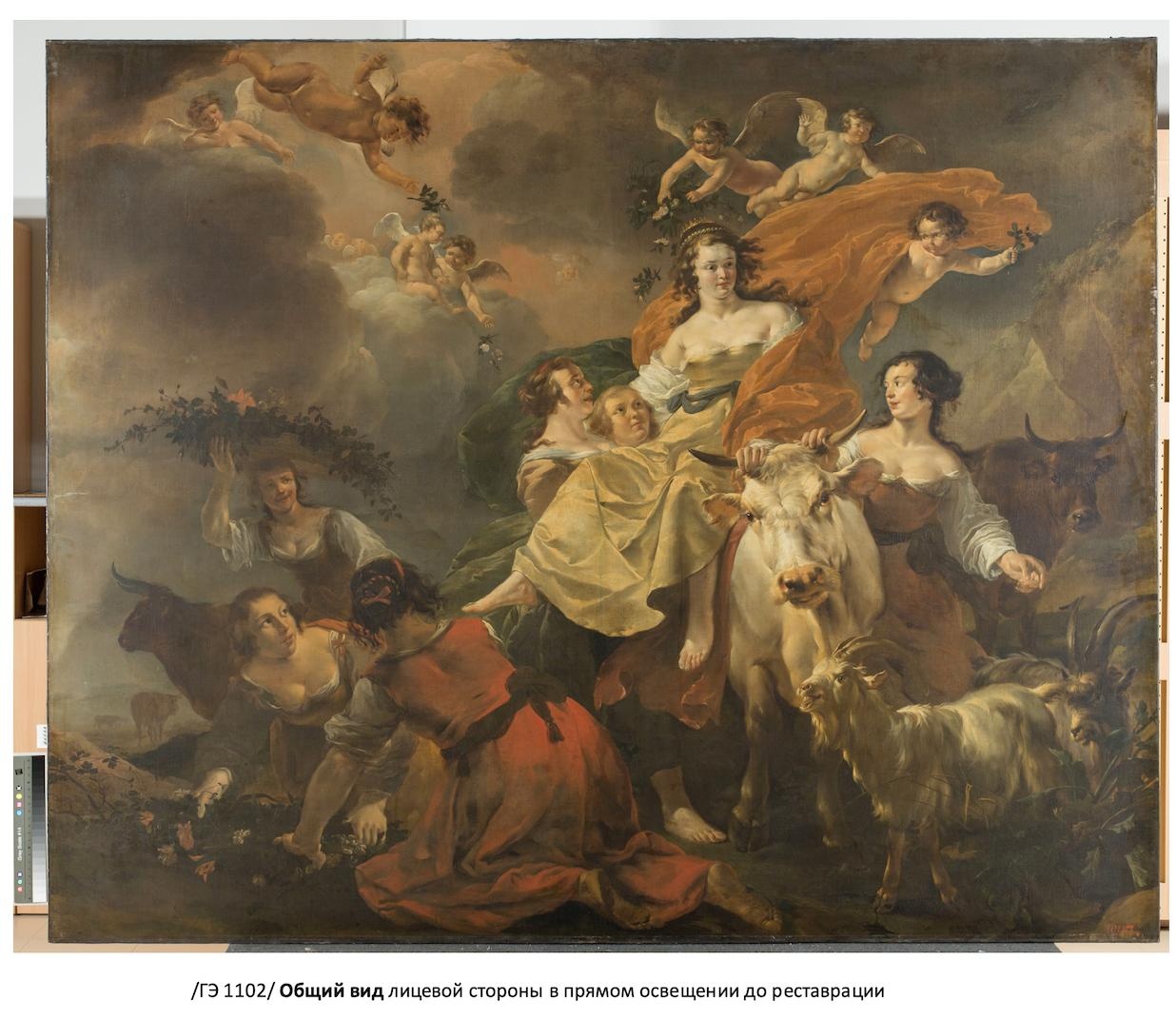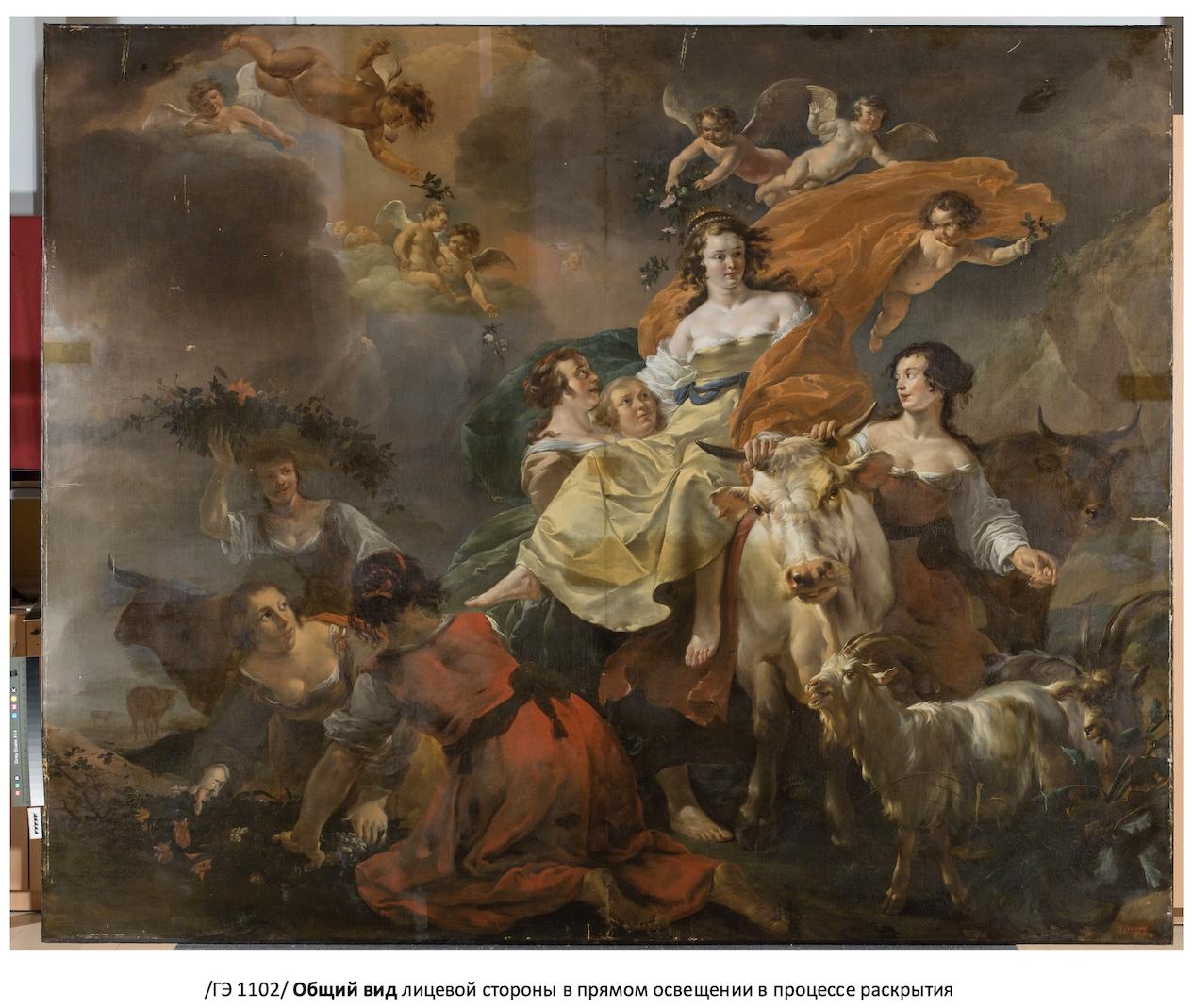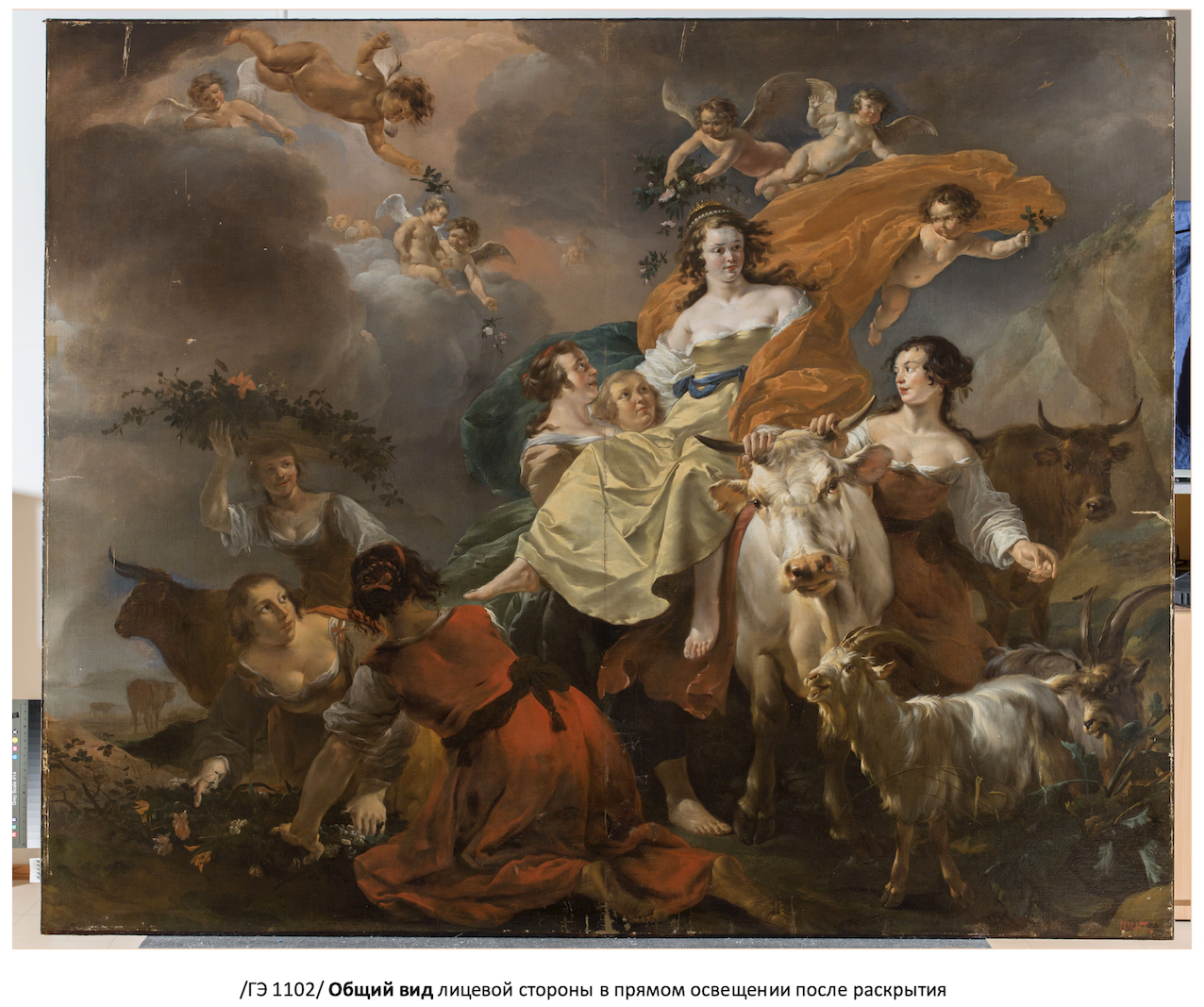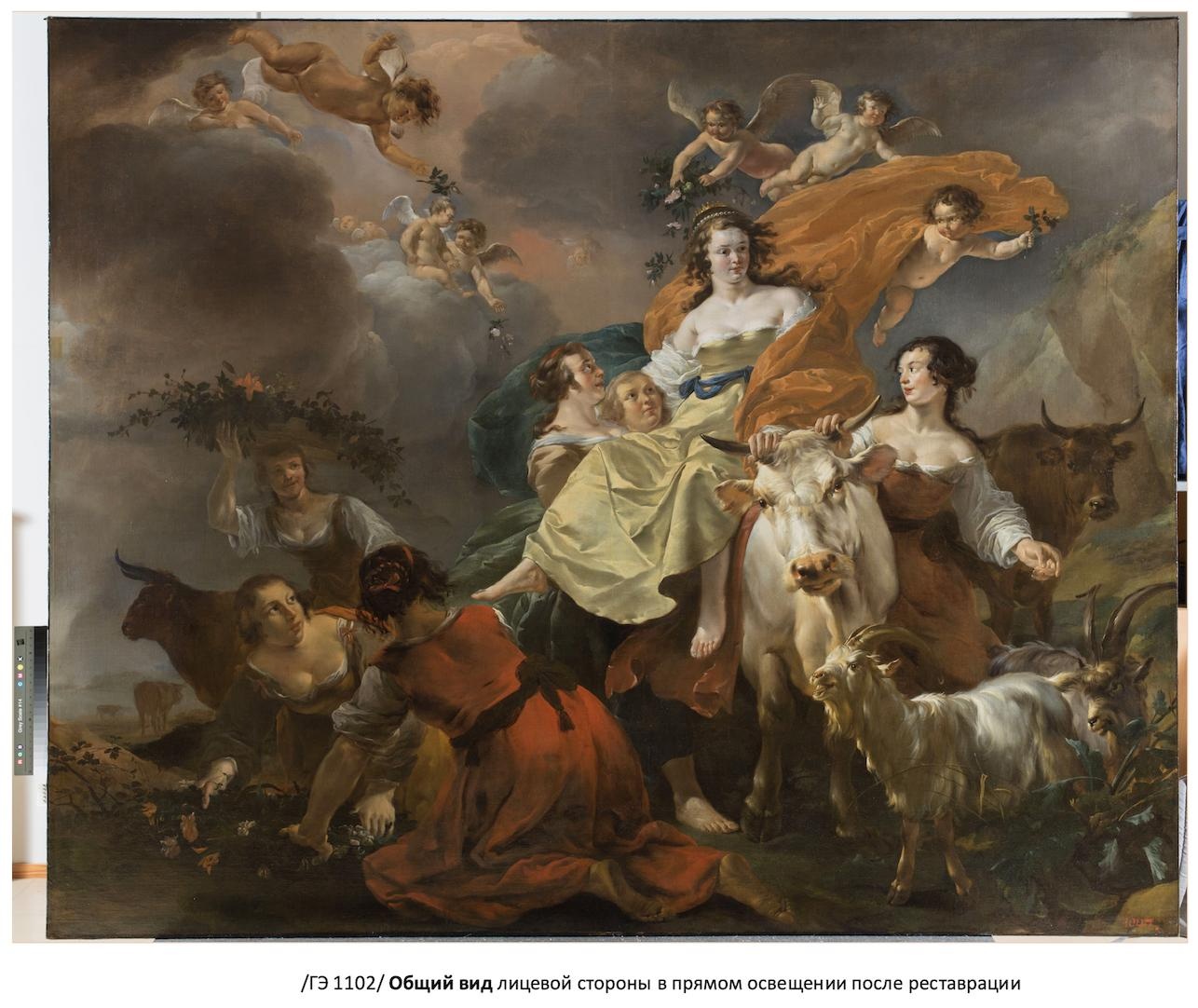Report on the Restoration of Nicolaes Berchem’s Painting The Rape of Europa
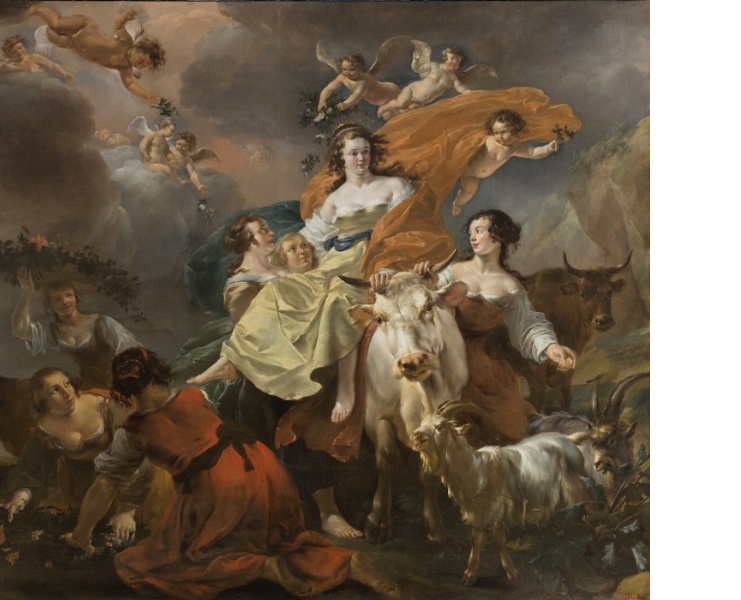 Nicolaes Berchem (1620–1683). The Rape of Europa. Signed and dated bottom left: “Berighem f. 16…9”. Oil on canvas. 219 × 269.5 cm. Front side under direct illumination. After restoration
Nicolaes Berchem (1620–1683). The Rape of Europa. Signed and dated bottom left: “Berighem f. 16…9”. Oil on canvas. 219 × 269.5 cm. Front side under direct illumination. After restorationNicolaes Berchem’s The Rape of Europa is a work from the early period in the career of that outstanding Dutch painter, an exponent of Classicism. The date the artist placed on it has been partially lost, but 18th-century catalogues give it as “1649”. The subject is a classical myth, known in the Netherlands from Ovid’s Metamorphoses, which tells of Zeus’ love for the beautiful Europa, the daughter of King Agenor of Phoenicia. Zeus appeared to the princess in the guise of a magnificent white bull as she was playing on the seashore with some female companions and abducted her, carrying her on his back across the sea to the island of Crete.
The monumental scale of the composition, the life-sized figures, bright palette and naturalistic details invest this work with a touch of the Baroque. It is not without good cause that researchers note the Hermitage picture’s affinity with Flemish painting, especially the oeuvre of Jacob Jordaens.
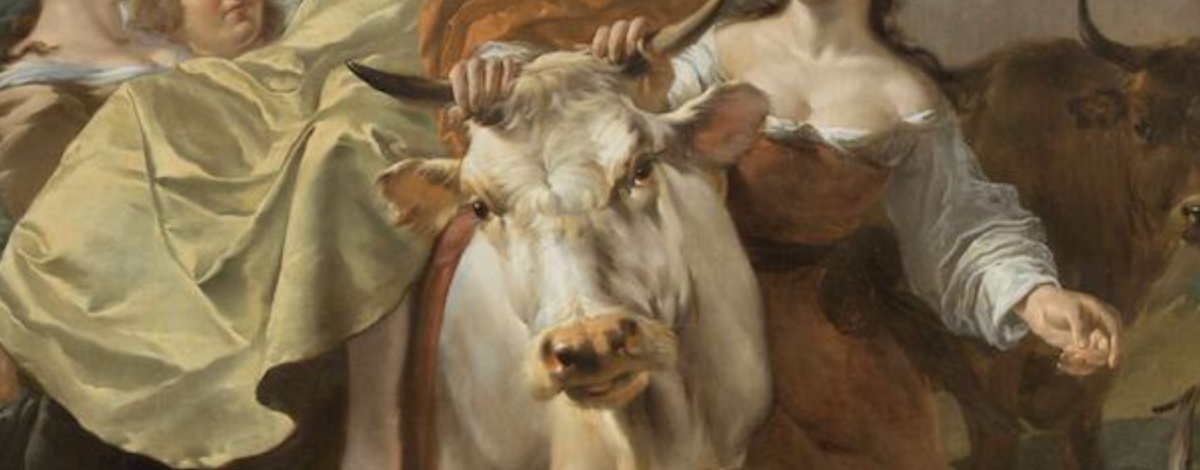
The Rape of Europa reflected the diversity of Berchem’s talents, showing his worth simultaneously as a history painter, a landscapist and a painter of animals. The head of the mighty white bull with its damp nostrils is depicted with phenomenal virtuosity, making the image one of the most memorable animal “portraits” in the history of 17th-century Dutch art.
The painting came from the collection of Johan Hendrik van Heemskerk, which was sold at auction in Amsterdam in 1770. It entered the Imperial Hermitage before 1774.
Before Restoration
State of Preservation : The entire surface of the painting was covered with old, yellowed varnish that had darkened and lost its transparency. On the depiction of the foreground figures, in shadowy places on the clothing, deep degradation of the badly blanched varnish was in evidence. Overpainting and retouching made during previous restorations, especially noticeable on the bare parts of the bodies, had altered in tone and colour. In certain areas, the bond between the paint layer and the primer was disrupted, leading to the appearance of coarse craquelure. The picture looked faded, having lost its contrast and intensity of colour. Deformation of the canvas support was also observed.
- 1 / 4
- 2 / 4
- 3 / 4
- 4 / 4
Restoration
Комплекс проведенных реставрационных мероприятий:
- visual examination of the painting’s state of preservation before restoration
- technical-technological inspection under infrared (Osiris camera) and ultraviolet light and compositional analysis of the organic materials using an Agilent 7890 B/ 5977 gas chromatograph / mass spectrometer
- detailed documentation of all restoration processes performed
- removal of surface soiling from both front and back sides of the painting
- strengthening of the bond between the paint layer and primer in individual areas
- elimination of the deformation of the canvas
- regeneration of the old varnish
- development of a methodology for reducing the thickness of the varnish and removing overpainting
- layer-by-layer reduction of the thickness of the varnish
- selective removal of overpainting of various dates that distorted the original artist’s paintwork
- remedying the deep degradation of the binder in certain areas
- further removal of varnish and overpainting across the whole surface of the painting
- application of restoration primer at the sites of losses
- repeat regeneration of the old varnish, now reduced in thickness
- coating the painting with fresh varnish
- making good the losses in the paint layer, limited to areas of damage.
The restored painting will soon be returned to public view in the Hermitage’s permanent display of Dutch painting.
The restoration of the painting was carried out by a group of State Hermitage staff:
scholarly supervisor – Irina Sokolova, Keeper of Dutch Painting;
co-ordinator – Katerina Sirakanian, head of the Development Service;
curator – Victor Korobov, head of the Laboratory for the Scientific Restoration of Easel Paintings;
artist-restorers – Valery Brovkin and Maxim Lapshin from the staff of the Laboratory for the Scientific Restoration of Easel Paintings.
